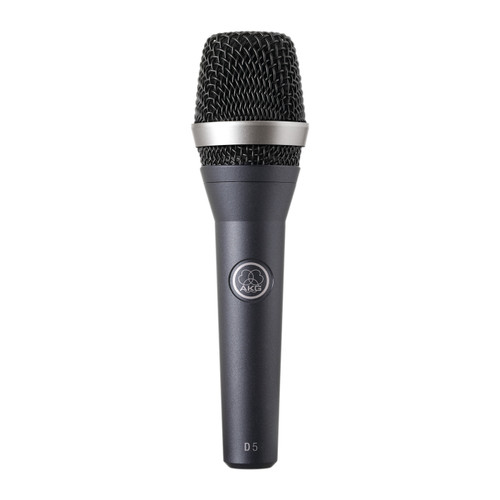Turn up the volume on your sound with the AKG P4 dynamic instrument microphone. Part of the AKG Perception series, the P4 microphone delivers intense sound that’s perfect for miking drums, percussion, wind instruments, and guitar amps.
Hear only the music you’re trying to amplify with the P4’s cardioid polar pattern. The cardioid polar pattern focuses on sound in front of the microphone, so other musicians on stage and crowd noise coming from the sides and back of the microphone does not get picked up. Having a cardioid polar pattern also offers the added benefit of reducing feedback.
It’s no problem to take the P4 on the road with you. The microphone itself has durable construction and included with the mic is a zip bag for safe transport and storage.
AKG P4 Features
- Built-in hum compensation coil rejects EMC noise for the cleanest sound
- Handles SPLs up to 152 dB
- Cardioid polar pattern
- Flat and sweet frequency response naturally reproduces instrument sound
- Integrated stand adapter and external bracket makes it easy to mount on drums and mic stands
About Dynamic Microphones at Sound Productions
If you’re looking for an all-purpose, heavy-duty microphone, look no further than a dynamic microphone. Equally outstanding in both the studio and live on stage, dynamic mics are an affordable, versatile, and classic option for nearly every miking application. Popular uses include live performances, studio recordings, man-on-the-street style interviews, as well as podcasts that aim for a professional “radio voice” polish.
Dynamic microphones work using a coil attached to a magnet. When sound waves cause the coil to vibrate up and down against the magnet, an electromagnetic current is induced; in simple terms, this turns the sound into an electronic signal to be channeled into a recorded version or—in the case of live sound—into a speaker to distribute the sound to the audience.

What’s in the Box?
- P4 dynamic instrument microphone1
- H440 adapter plate1
- Microphone bag1
- Transducer TypeDynamic
- Polar PatternCardioid
- Frequency Response40 Hz - 18 kHz
- Output Impedance500 ohms
- Sensitivity2.5 mV/Pa
- Housingstage black
- Audio Outputbalanced XLR, male, 3-pin
- Dimensions
- Measurements: 4.33" x 3.07" x 1.73"
- Weight: 8.64 oz (245 g)





































